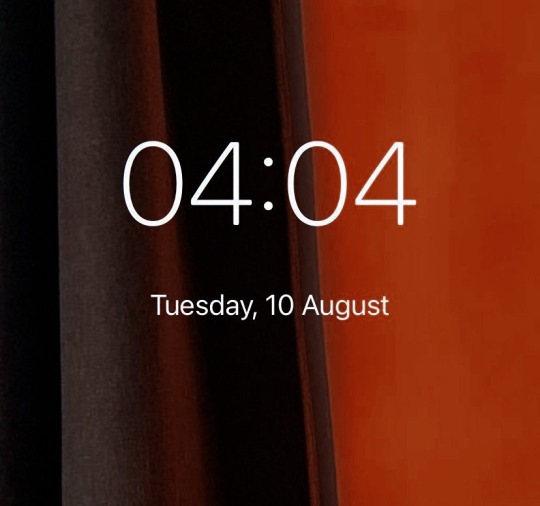#Feeds
Text






#karina#karina moodboard#karina aespa#messy moodboard#random layouts#aespa moodboard#mb#mb alt#archive#archive moodboard#alternative#alternative moodboard#kpop moodboard#messy layouts#karina layouts#aespa layouts#bios#feeds#moodboard#colorful moodboard#y2k moodboard#pink moodboard#soft moodboard#soft bios#bios soft
208 notes
·
View notes
Text
I recently started following a “parody” train company blog that interacts with other parody train company blogs, makes jokes about transit, and sometimes seems to forget it’s supposed to be a parody of a train company and not just like, this person, you know?
All this to say, my Tumblr feed is shaping up nicely.
#that train content#amtrak#feeds#just transit things#parody isn’t the right word but you know#trains#hecksite
234 notes
·
View notes
Text



✦ an angel cried ✧ *・゜゚・



#hanni#hanni pham#newjeans#newjeans hanni#moodboard#hanni mb#hanni moodboard#Danielle#haerin#minji#symbols#cute symbols#bios#user ideas#Instagram bios#feeds#Instagram#Instagram moodboard
29 notes
·
View notes
Text









#mark lee#lee mark#nct dream#mark nct#nct 127 mark#mark lee nct#markhyuck#messy moodboard#kpop#kpop layouts#messy locs#carrd help#kpop girls#moodboard#feeds#aesthetic#lq icons
219 notes
·
View notes
Text
End to End

In “End to End,” my new column for Locus Magazine, I propose a policy framework for a better internet: the “End to End” principle (E2E), a bedrock of the original design for the internet, updated for the modern, monopolized web, as a way of disenshittifying it:
https://locusmag.com/2023/03/commentary-cory-doctorow-end-to-end/
If you’d like an essay-formatted version of this post to read or share, here’s a link to it on pluralistic.net, my surveillance-free, ad-free, tracker-free blog:
https://pluralistic.net/2023/03/07/disenshittification/#e2e
The original E2E marked the turning point from telco-based systems where power was gathered at the center, controlled by carriers, to the packet-switched internet, where power moved to the edges. Under the old model, only the network operator could add new features. If you wanted to create, say, Caller ID, you needed to convince the phone company to update its switches to support a new signaling system (and you probably had to rent a Caller ID box from the carrier, too).
But packet-switching made it possible for new services to be created by people at the edges of the network. Once your device was connected to the internet, it could exchange data with any other device on the internet. If someone set up a voice-calling system and you connected to it, they could add Caller ID to it without asking Ma Bell for permission.
End to end was the core ethic of this system: the idea that the telcos that sat beneath these systems should get out of the way of their users, serving only to deliver data from willing senders to willing receivers as quickly, efficiently and reliably as possible.
E2E was a powerful idea, one that truly treated the telcos as utilities — the plumbing that sat beneath the services, obliged to serve its subscribers by doing their bidding to the extent they could. If you chose to use a internet calling service instead of making phone calls, the carrier’s job was to shuttle those packets around, not to slow them down or block them to funnel you into its rival service.
There’s a powerful logic to this: no one rents a phone line because they want to make sure that the carrier’s shareholders are getting the highest possible return on their investment. The reason we buy network connections is to get to the services we value.
We have no duty to arrange our affairs to the benefit of a carrier’s shareholders. If those shareholders are so emotionally fragile that they can’t bear the thought of network users making their own choices on which services to use, they should get into a different line of work.
E2E wasn’t a law, it was a principle. Principles are useful! They can be embedded in laws (for example, the laws that establish most network providers as common carriers often include an E2E rule), but just as importantly, they can give us a vocabulary for critiquing or designing services: “Ugh, I won’t use that service, it’s not end to end,” or “How can we make this work in an end to end way?”
Principles can be integrated into professional codes of ethics, or procurement rules for public bodies (“Our university only buys end to end services”). Tech groups and publications can use principles to rank competing technologies (“Which network providers are end to end?”).
Network Neutrality is a way of operationalizing E2E: the idea of Net Neutrality is that carriers should be obliged to treat all traffic the same. If you request Youtube packets from Comcast, Comcast should deliver those packets as quickly and reliably as it can, even though its parent company, Universal, owns several competing services.
Net Neutrality can be treated as a principle (“This ISP sucks — it violates Net Neutrality”) or as a regulation (“The FCC is fining your ISP because it violated Net Neutrality”). As a regulation, Net Neutrality has a problem: it’s hard to administer, because it’s very difficult to detect Net Neutrality violations. The internet is a “best effort” network, with no service guarantees, so when your Youtube connection starts to jitter, it’s hard to prove that this is because Comcast is screwing with it, as opposed to regular network congestion.
Which brings me to my E2E proposal: end to end for services. Contemporary services have no E2E. If you search for a product on Amazon, Amazon often won’t show you that product until you’ve looked at five screens’ worth of other products that have paid Amazon to interrupt your search:
https://pluralistic.net/2022/11/28/enshittification/#relentless-payola
If you hoist an email out of Gmail’s spam folder and add the sender to your address book, Gmail will still send that message to spam, or even block its server. It’s incredible that we had a Congressional debate about whether Gmail should mark politicians unsolicited fundraising emails as spam but not whether emails from your reps that you asked to receive should be delivered:
https://doctorow.medium.com/dead-letters-73924aa19f9d
Platform creators are workers whose boss is an algorithm that docks every paycheck to punish them for breaking rules they aren’t allowed to know about, because if the boss told you the rules, you’d learn how to violate them without him being able to punish you for it. Again, it’s wild that we’re arguing about “shadowbanning” (a service choosing not to send your work to people who never asked to see it), while ignoring the fact that platforms won’t deliver your posts to people who explicitly subscribed to your feed:
https://pluralistic.net/2023/01/21/potemkin-ai/#hey-guys
Alexander Graham Bell’s first telephone operators were young boys who entertained themselves by deliberately misconnecting calls, putting you in contact with people you never asked to talk to and refusing to connect you with the people you were trying to converse with.
As @brucesterling wrote in The Hacker Crackdown:
The boys were openly rude to customers. They talked back to subscribers, saucing off, uttering facetious remarks, and generally giving lip. The rascals took Saint Patrick’s Day off without permission. And worst of all they played clever tricks with the switchboard plugs: disconnecting calls, crossing lines so that customers found themselves talking to strangers, and so forth.
https://www.mit.edu/hacker/hacker.html
Bell fired those kids. Even the original telecoms monopolist understood that the point of a telephone network was to connect willing speakers with willing listeners.
Today’s tech barons are much more interested in charging other people to interrupt your consensual communications with nonconsensual and often irrelevant nonsense and ads. This is part of the enshittification cycle: first, the platforms lock you in by giving you a good deal, including feeds that contain the things you ask to see and search boxes that return the thing you’re looking for.
Then, platforms take away your surplus and give it to business customers. They spy on you and use the data to help target you on behalf of advertisers, whom they charge low rates for ads that are reliably delivered. They insert performers’ and media companies’ posts into your feed, generating traffic funnels that result in clicks to off-platform sites. They offer low fees and even subsidies to platform sellers and creators who produce DRM media, like ebooks and audiobooks.
Users get locked into the platform — by the collective action problem of convincing their friends to leave, by the collapse of local retail that can’t match the investor-funded subsidies of would-be monopolists, by DRM that they are legally prohibited from removing, causing them to lose their investment if they quit the service.
Business customers also get locked to the platform: platform sellers have to sell where the buyers are; publishers and creators have to provide media where the audiences are; advertisers have to run ads on the services they’ve optimized for.
Once everyone is locked in, the platform can fully enshittify, harvesting surpluses from users and business customers for themselves. Platforms can hike fees, charge media companies and creators to reach their own subscribers, block posts with links off-site, insert ads into media (like Audible is doing with paid audiobooks!), and so on.
This is the cycle that E2E seeks to interrupt. E2E for services would dictate that platforms should connect willing speakers and willing listeners. The best match for your search should be at the top of the results — even if someone is willing to pay more to put a worse match there. Emails should be delivered to people you’ve told your provider you want to correspond with — not sent to a spam folder or blocked.
As with the original E2E, there’s lots of ways we can use this principle. It can simply be a term for criticizing platforms (“You aren’t sending my posts to the people who follow me — that’s a violation of the end to end principle!”). It can be a law (“It is a deceptive and unfair practice for ecommerce companies to deliberately return search results that are not the best match they can locate for the users’ query”). It can be a punishment (“The FTC settled with Google today and ordered the company to implement a Gmail feature that permits users to identify senders whose messages will never be blocked or sent to spam”).
Lots of people are pissed off about Big Tech and many have proposed that we could make it better by treating platforms as “utilities.” But I don’t want President DeSantis to run my email provider, or to decide what’s too “woke” for me to see (or post) on social media.
An E2E rule, on the other hand, creates a role for government that doesn’t determine who gets to speak or what they get to say — rather, it ensures that when people speak and to others who want to hear them, the message gets through.
Unlike Net Neutrality, E2E is easy to administer. If I claim that your emails are being sent to spam after I marked you as a sender I want to hear from, we don’t have to do a forensic investigation into Google’s mail servers to determine if I’m right. You just send me an email we observe where it lands.
Likewise for search: if I search Amazon for a specific product or model number, it’s easy to tell whether that product is at the top of the search results or not.
Same goes for delivery to subscribers: if we suspect that Twitter is shadowbanning posters — say, for including their Mastodon addresses in their bios, or linking to posts on Mastodon — we just send some test messages and see whether they are delivered.
Beyond administratability, E2E has another advantage: cheap compliance. Lots of the rules we’ve created or proposed for service providers are incredibly complex and expensive to comply with. Take rules about “lawful but awful” content, which require platforms to somehow determine whether a message constitutes harassment and block it if it does.
These rules require an army of expensive human moderators or a vast, expensive machine learning system, or both — so they guarantee that Big Tech will rule the internet forever, because no one else can afford to launch a new service with better community norms and better practices.
By contrast, E2E is cheap to comply with. Trusted-sender lists for email providers, search engines that put best results first, and content delivery algorithms that show you the things you asked to see in the order that they were posted are all solved problems:
https://www.theatlantic.com/ideas/archive/2023/03/social-media-algorithms-twitter-meta-rss-reader/673282

This isn’t to say that platforms wouldn’t be allowed to offer algorithmic feeds and results. Think of how Tumblr does it: you can choose between a feed called “Following” (posts from people you follow) or “For You” (posts that Tumblr thinks you’ll enjoy). Forcing platforms to clearly label their recommendations and give you the choice of controlling your own feed is a powerful check against enshittification.
If you know when you’re in charge and when the platform is driving things, and if you can toggle away from platform-determined feeds to ones that you design, the platform has to be better than you at choosing what you see, or you won’t choose its recommendations.
Platform owners have hijacked the idea that “freedom of speech isn’t freedom of reach” to justify the now-ubiquitous practice of overriding users’ decisions about what they want to see:
https://pluralistic.net/2022/12/10/e2e/#the-censors-pen
The Old Internet had lots to going for it. It wasn’t perfect, though. While it was easy to find the things you knew you liked, it could be hard to find things you didn’t know you liked. Recommendations, whether they come from an algorithm or a human editor, are a source of endless delights. But when a we find something we like through one of those recommendations, we need to know that we can find more from that source if we choose to.
Sometimes it’s nice to scroll an algorithmic feed and get a string of surprises. But we are forced to use those feeds, they will inevitably enshittify, to our detriment, and to the detriment of the people who make the things that please us.
As ever, the important thing about a technology isn’t what it does, it’s who it does it for and who it does it to. When we control our feeds, we can choose to let a recommender system do the driving. If we’re locked into a recommendation system, it drives us.
Today (Mar 7), I’m doing a remote talk for TU Wien.
On Mar 9, you can catch me in person in Austin at the UT School of Design and Creative Technologies, and remotely at U Manitoba’s Ethics of Emerging Tech Lecture.
On Mar 10, Rebecca Giblin and I kick off the SXSW reading series.
Image:
Felix Andrews (modified)
https://commons.wikimedia.org/wiki/File:Elephant_side-view_Kruger.jpg
CC BY-SA 3.0
https://creativecommons.org/licenses/by-sa/3.0/deed.en
[Image ID: A room full of telephone operators at a switchboard; their heads have been replaced with hacker-in-a-hoodie heads. On the wall behind them is a poster ad for Facebook with the slogan, 'Find Your Facebook Group.' Atop the switchboard stands a small elephant with a bite taken out of its back.]
#pluralistic#enshittification#disenshittification#e2e#end to end#feeds#algorithmic feeds#search#reverse chrono#rss#amazon#net neutrality
105 notes
·
View notes
Note
no matter where you roam you have a home here and we all love you. and the people that wanna be mean can feed the rest of us
no matter where u roam .I’m cherishing that anon Tysm ^_^
20 notes
·
View notes
Text






⠀ ⠀ ⠀ ⠀ ⠀ ❘ ❙ ❚ ⠀🌳 ⠀EnD gAmĒ ! ⠀🪵 💧
10 notes
·
View notes
Text
🫣• 𓂋 𝓓꯭𝗋𝖾𝖺꯭𝗆









#blue moodboard#moodboard#aesthetic#kpop#winter#jennie#instagram#feeds#theme#nature#retro moodboard#art#aespa messy moodboard#aespa packs#messy layouts#spotify
147 notes
·
View notes
Text









ㅤㅤㅤ ㅤ ㅤㅤㅤ 𝘫𝘰𝘺 𝘳𝘦𝘥 𝘷𝘦𝘭𝘷𝘦𝘵
#moodboard#joy#joy red velvet#joy moodboard#theme#messy#joy feeds#feeds#joy red Velvet moodboard#joy red Velvet feeds
37 notes
·
View notes
Text









✦. ⊹ ˚ ꒰ dokyeom moodboard ꒱
— like or reblog if you save 💌 ˎˊ˗
5 notes
·
View notes
Text

I’m crying help-
3 notes
·
View notes
Text
I am starting a blog on WordPress, I'm moving my posts there but I still plan to post here too. Here's my blog if you want to visit theauristicat.wordpress.com
#autism#autistic adult#autistic experiences#actually autistic#autistic women#autism level 2#late diagnosed autistic#autism diagnosis#asd#autistic#blog#feeds#wordpress#fyp
4 notes
·
View notes
Text









#doyeon#weki weki#weki meki#weki meki doyeon#doyeon weki meki#weme icons#doyeon moodboard#pink moodboard#messy moodboard#kpop layouts#kpop#messy locs#moodboard#carrd help#aesthetic#feeds#lq icons#kpop girls#kpopccc#doyeon layouts#black and white
237 notes
·
View notes
Text
An empty shell and its energy provider.

I've been having a lot of oc ideas lately, Feel free to ask questions about them if you have any
#feeds#kirby#kirby fanart#kirby oc#zero kirby#Kinda#The pink eye and Zero are the same species#And it dark matter to the dark orb with knives#No they do not have names yet
12 notes
·
View notes
Text
i feel that i should clarify what i mean by "the feed is a dark pattern". a dark pattern is an interface that tricks users into doing things that they don't actually want to do. i used to be a fan of chronological feeds--they're certainly better than algorithmic feeds. the problem with them, however, is that people who post a lot tend to drown out people who post less, even though the people who post a lot may post content which is less important or meaningful to you. my favorite solution to this is to show the people you follow as a list, sorted by most recently posted to least recently posted, and show the number of unread posts from that person. then, you can open that person's blog or account and read their posts. this allows you to stay up-to-date on everyone without missing out on posts from people who post a lot.
3 notes
·
View notes
Text
Diri sendiri.
Harus kuatin diri sendiri kalo jalan yang ditempuh gak sesuai harapan.
Harus semangatin diri sendiri kalo doa yang dijawab gak sesuai keinginan.
Yang bisa bantu diri kita sebenernya diri kita sendiri. Orang lain hanya bisa menasihati. Orang lain hanya bisa mendoakan.
Hidup kita ya hanya diri kita sendiri yang bisa mengendalikan. Semua keputusan untuk hidup kita hanya ada di kendali kita.
Apapun keputusan kita berharap itu adalah yang terbaik.
Amin.
#diri sendiri#quotes#positivity#positive quotes#positive#penulismuda#self love#motivasionline#curhat#inspirasianakmuda#inspiration#inspirasihidup#motivasihidup#motivasi#fyp#instagrampostagain#follow my instagram#instagramfeeds#instagrampost#feeds#baikbaikasaja#selfrealization#selfreminder#self worth#self improvement#arioagio#jadilebihbijak#jadilebihbaik#penulistumblr#penulispemula
3 notes
·
View notes